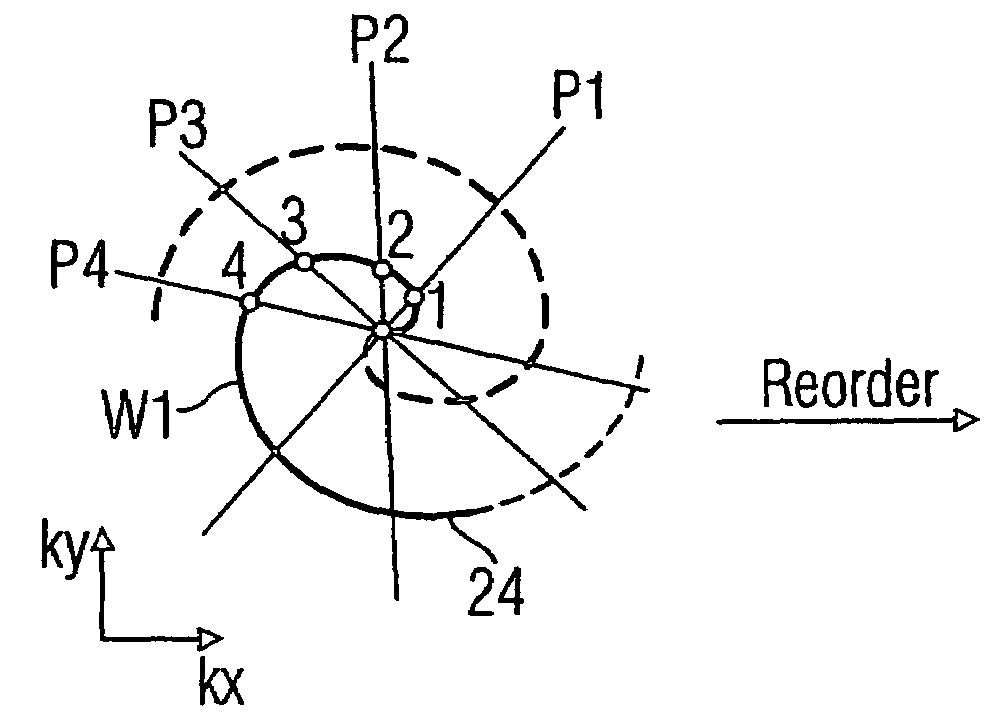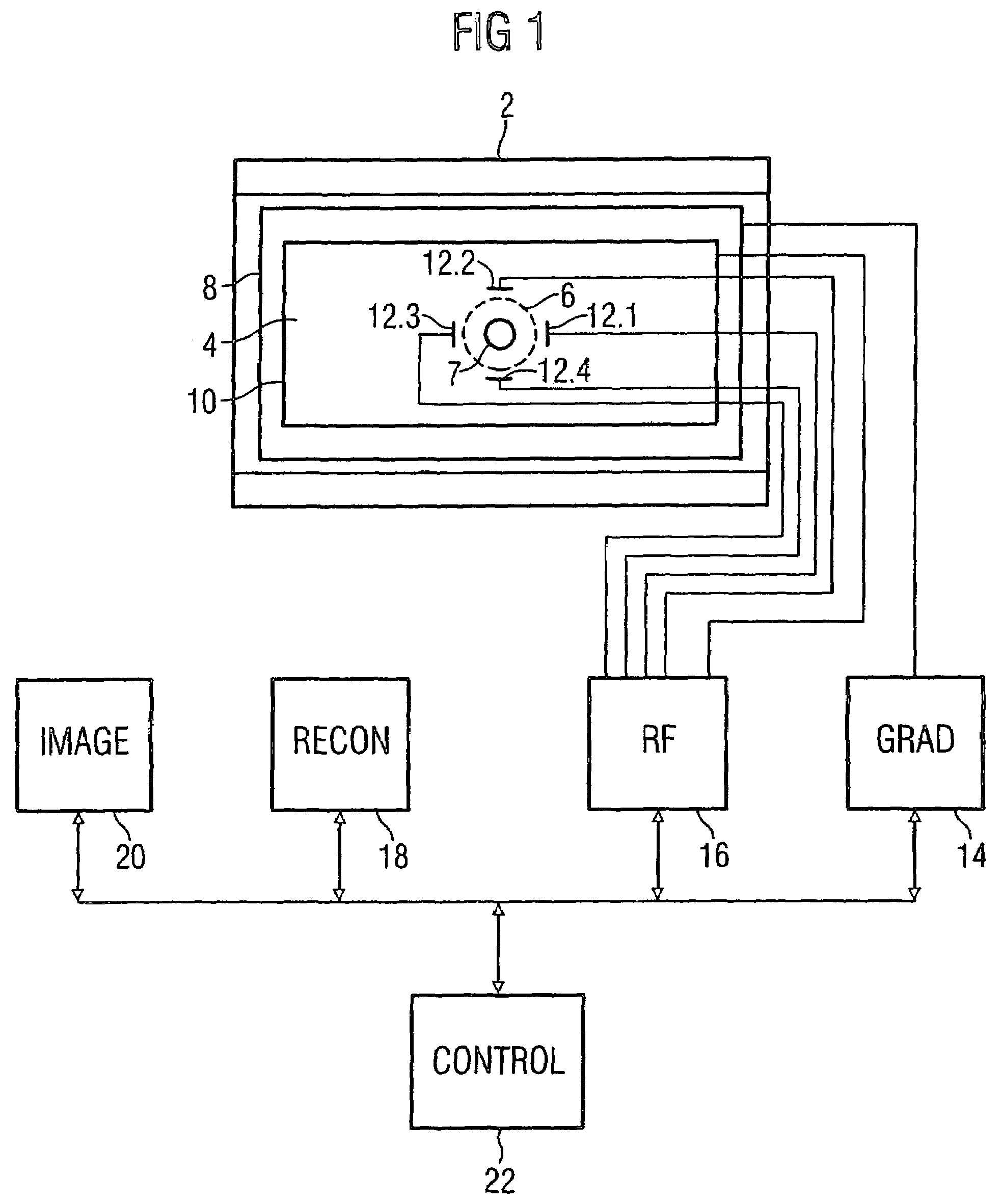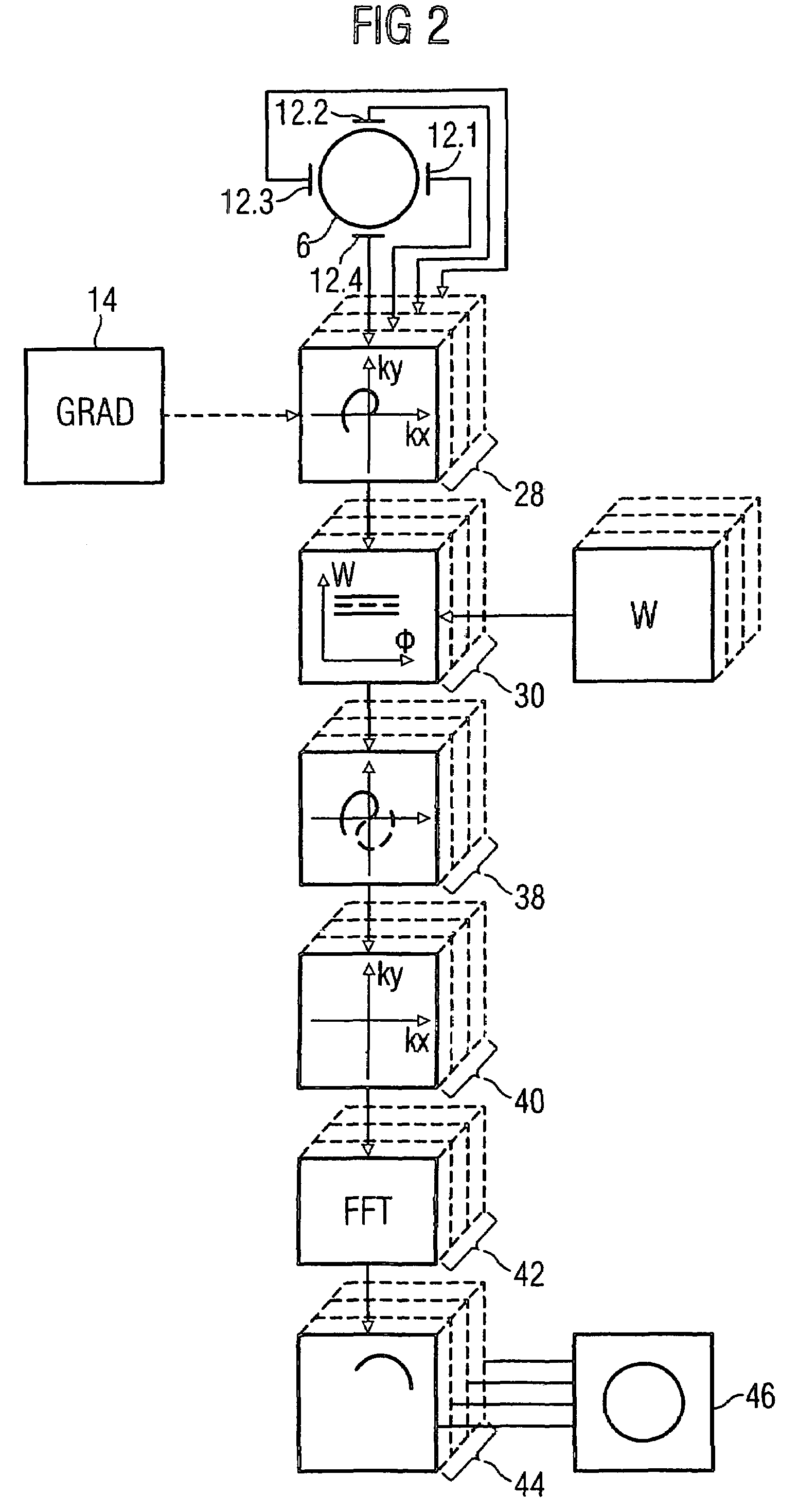Magnetic resonance imaging method using a partial parallel acquisition technique with non-Cartesian occupation of k-space
a magnetic resonance imaging and partial parallel acquisition technology, applied in the direction of reradiation, measurement using nmr, instruments, etc., can solve the problem of computationally intensive reconstruction effort in this known method, and achieve the effect of not excessive reconstruction effor
- Summary
- Abstract
- Description
- Claims
- Application Information
AI Technical Summary
Benefits of technology
Problems solved by technology
Method used
Image
Examples
Embodiment Construction
[0020]FIG. 1 shows the basic components of a diagnostic magnetic resonance apparatus designed to implement an exemplary embodiment of the invention. The magnetic resonance apparatus has a basic field magnet 2 that generates a homogeneous magnetic field in a cylindrical patient space 4 in a spherical imaging volume 6. An imaging volume 7 of a patient is situated within this imaging volume 6 for data acquisition therefrom. The basic magnetic field is aligned parallel to the longitudinal axis of the cylindrical patient space 4. A gradient system 8 is provided for spatial coding of magnetic resonance signals excited for imaging the gradient system 8 generates linear gradient fields in the imaging volume 6 in three directions perpendicular to one another, these linear gradient fields being superimposed on the basic magnetic field. The gradient system 8 essentially is formed by three coil pairs for generation of the gradient fields in the x-, y- and z-directions, the z-direction usually c...
PUM
 Login to View More
Login to View More Abstract
Description
Claims
Application Information
 Login to View More
Login to View More - R&D
- Intellectual Property
- Life Sciences
- Materials
- Tech Scout
- Unparalleled Data Quality
- Higher Quality Content
- 60% Fewer Hallucinations
Browse by: Latest US Patents, China's latest patents, Technical Efficacy Thesaurus, Application Domain, Technology Topic, Popular Technical Reports.
© 2025 PatSnap. All rights reserved.Legal|Privacy policy|Modern Slavery Act Transparency Statement|Sitemap|About US| Contact US: help@patsnap.com



